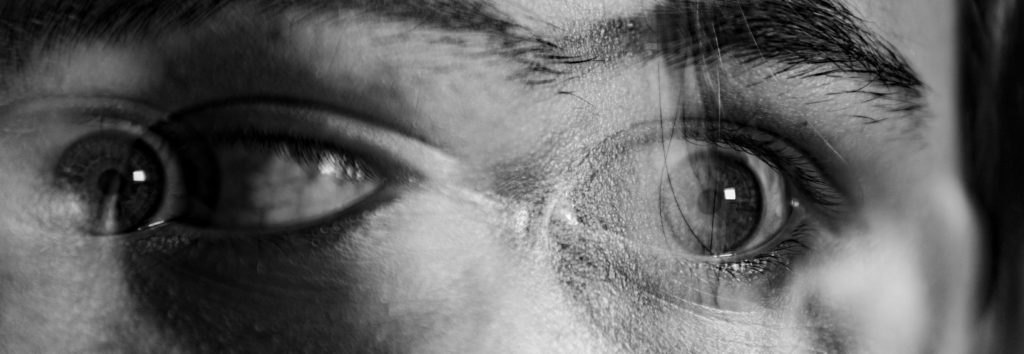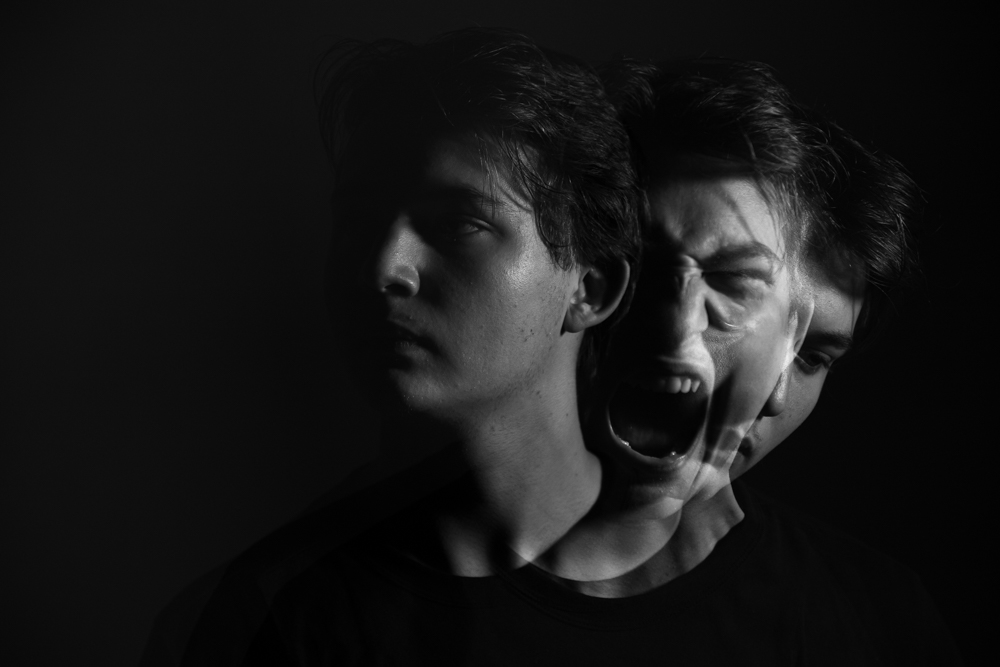For the first shoot in my personal study I decided to use low-key lighting to create the sense of being lost, as there is no clear mise-en-scene. I used a 24-105mm lens, but kept the focal length at 105mm for most of the photos as I liked the ‘flat’ look that it gave the images which a wider focal length would not have captured as well. I also used the widest aperture which was f/4 so I could play around with focus more in some of my images. Shutter speed was between 1/100 – 1/160 sec for most of my multiple exposures, and 8 seconds for the slow shutter speed images. In some ways this shoot was inspired by the work of Lief Sandberg, however I intend to make more of a response to his work in my 2nd photoshoot. However, I decided to use multiple exposures and slow shutter speeds in this shoot to create a slightly surrealist impression, and the low key, 1 point lighting only adds to the atmospheric feel that I was aiming to create. On top of this, it accurately represents the emotions that I wanted to get across in my original brief; that of depression, confusion and anger. This not only recreates the personal emotions and feelings that poor mental health can induce. Personally this shoot represents the stage of mental illness before getting help, when all of the emotions you feel start to boil over, and the pressure of not wanting to show “Weakness”.
Daily Archives: December 19, 2019
Filters
elaine constantine
Elaine Constantine is a photographer and also a writer and director. She is famous for her colourful and vibrant photos that mainly feature confident women. She is known to shoot for Vogue, i-D, Vivienne Westwood and many other magazines and brands. I like Constantine's work because she captures females and bright and confident characters and I see many aspects of the females in her images that resonate with my younger sisters.


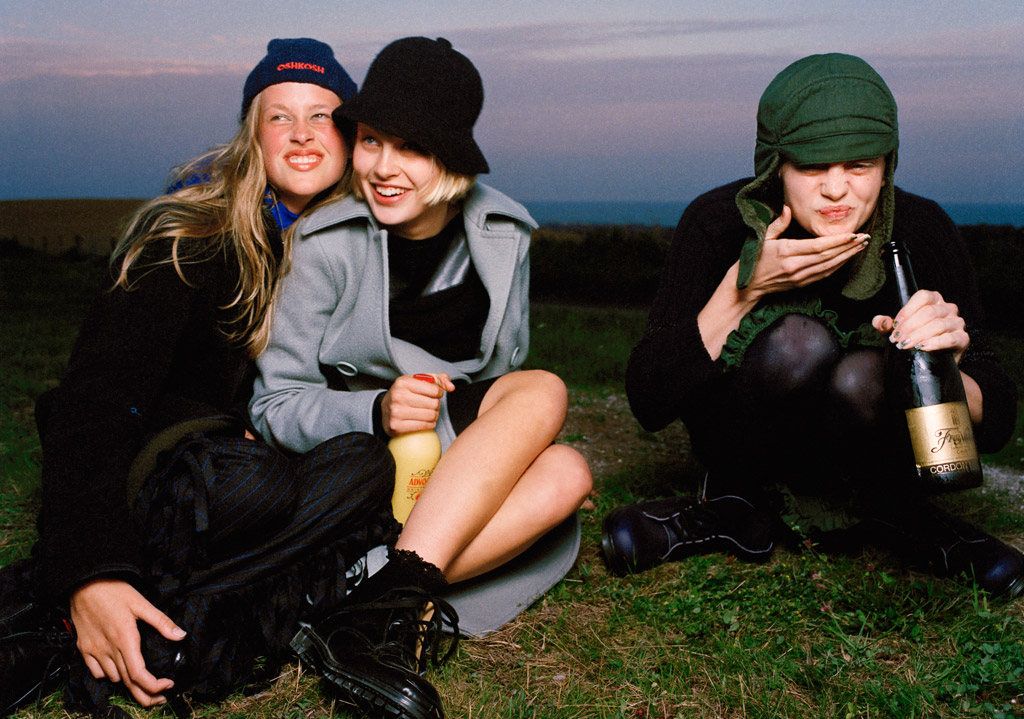
I want to use Constantine's style in my own work to capture when they have fun and are having silly moments. The flash creates a contrast of the skin with the backgrounds and the bright colours of clothing eccentuates the emotions portrayed from the subjects. In my own photoshoots I will use the flash when taking the images and when I am manipulating the images I shall increase the vibrance and saturation to enhance the colours in the photos.


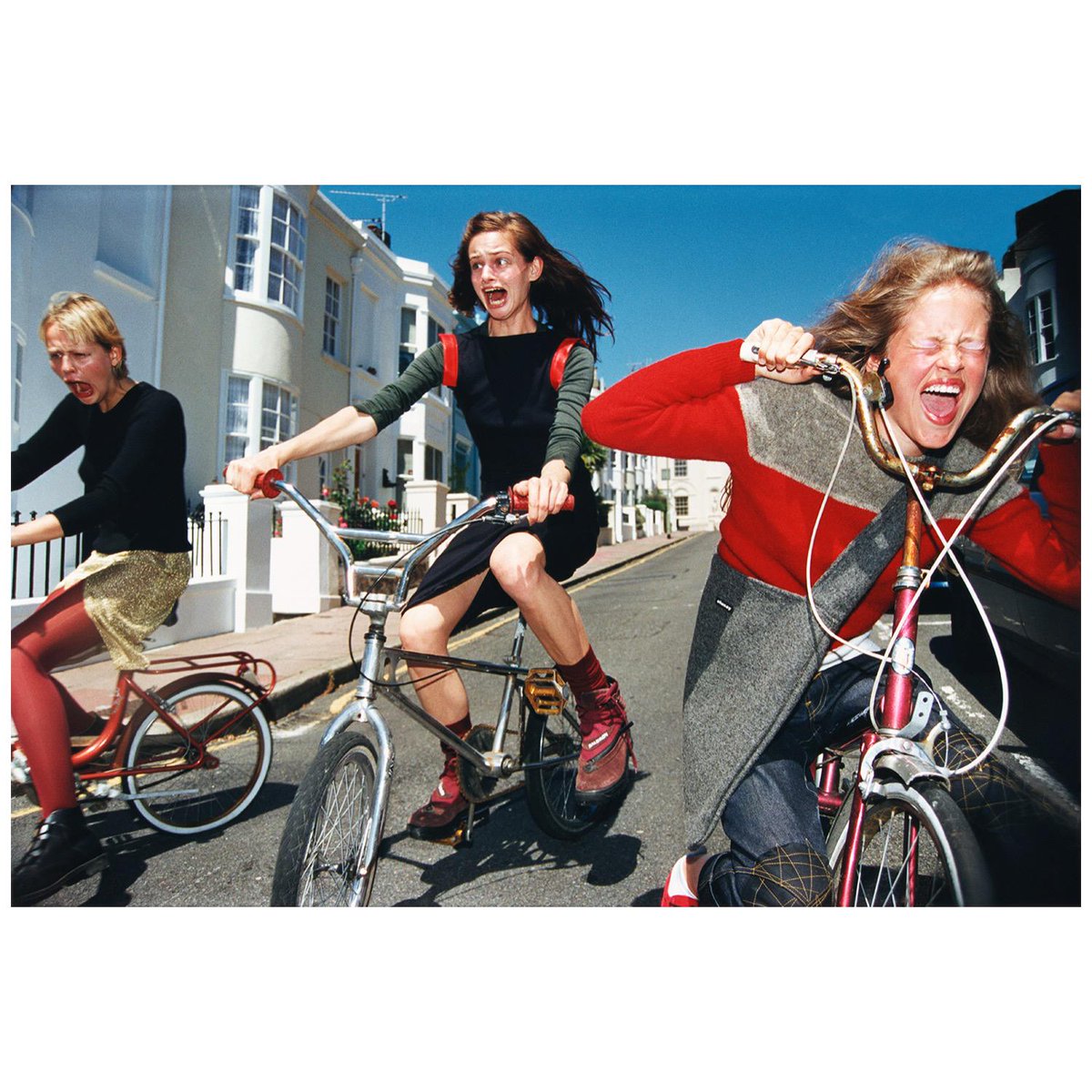
Shooting Plan
First things First: Gather old family photos!!
Plane ticket to the UK in the center of the book.
Shoot 1:
Observing family life (Dad) – Try and get snapshots of daily life. – just as i go
Concept:
- Dad doing bills?
- How the house looks as a single dad
- Maybe dad having one of his naps?
- Dad doing chores
- maybe re-enacting some photos
- portraits
Technical:
- Well lit
- candid – but not bad quality
Shoot 2:
Aesthetic Shoot – Try and get images that envoke feeling (in the style of Mateusz Sorello) – just as i go
- birds
- waves
- plants
- things that create a disjointed or lonely nature
Technical:
- flash
- grainy
- high clarity
Shoot 3:
Observing family life (Mum) – Try and get snapshots of daily life. – over new years
Concept:
- Housework
- How the house looks as a single mum
- re enacting childhood photos
- family life
Technical:
- Well lit
- candid – but not bad quality
- portraits
Shoot 4: 1st week back
- Revisiting places visited in family photos
- recreate
ARTIST STUDY – Jonathan Andrew
Jonathan Andrew is a Manchester born photographer working out of the Netherlands. he has acquired many awards across his career including winning an award in ‘historical architecture at the International Photography Awards’ and an honorable mention in ‘night photography at the International Photography Awards’.
The collection photographs various WWII defensive architecture, typically taken at night with the use of artificial lighting, likely to create interesting lighting that better interacts with the monolithic structures photographed. The photos are taken in a documentary fashion, featuring a small aperture and capturing the entirety of the subject in frame. The photos feature high contrast however seem to be adjusted to prevent any overpowering shadows or highlights. Blue and green tones appear to be emphasized across the collection. The images often feature quite heavy vignetting likely to show the importance of the subject in question.
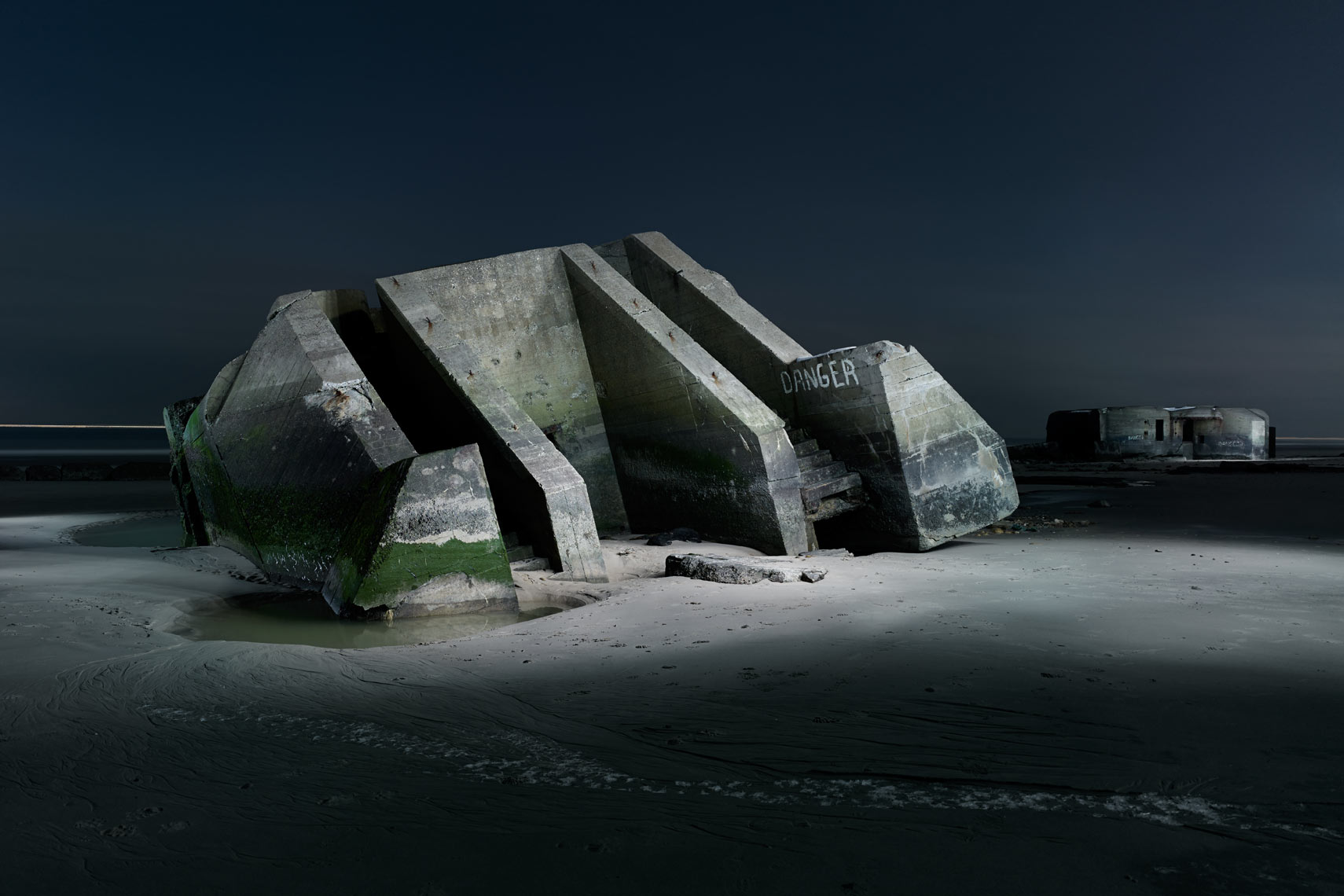
Demonstrated in the image above is the use of heavy vignetting, however the vignette selection appears to have left out a structure in the background. This structure appears smaller due to perspective, thus the viewers eyes will likely first look at the central subject then be drawn to the bunker on the right. in terms of camera setting, the image appears to stay similar to the rest of the collection; the image features a high degree of focus indicative of a small aperture, with even the shadows of the image being sufficiently exposed which implies the use of a long shutter speed, likely in conjunction with a tripod. The compositions for the collections seem similar throughout, often featuring a central subject with a generally uncluttered back/foreground. This image like many others in the collection seems to focus on the blue and green tones in frame, likely done in post due to the distinct lack of other strong tones.
Shoot 4 and Edits


This shoot went quite successful. The main difficulty of the of the shoot was being careful when removing the make up of the doll with the nail varnish.
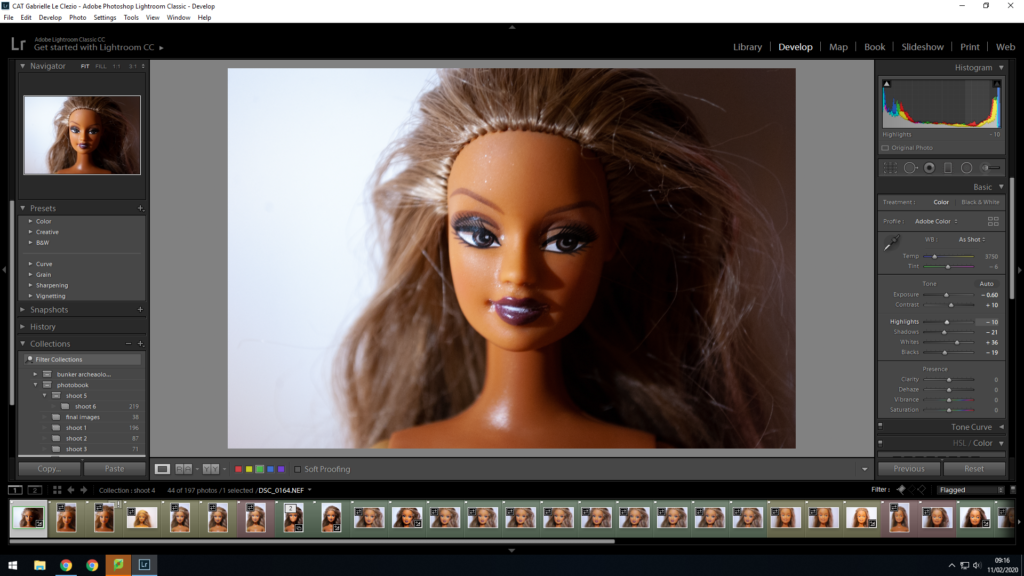




Personal Investigation – Post 5 (Artist Reference 2 – Daren You)
Daren You:
Daren You is a Chinese photographer currently living in the San Francisco Bay Area. His work has been published in Lens Culture Magazine, i-D, Der Greif Magazine, Phases Magazine and the official blog of San Francisco Museum of Modern Art.

His work focuses on chaos photography and unique processes to achieve his desired images with a sense of randomness linked to chaos photography itself.
Chaos Theory:

Chaos Photography:
One definition of chaos is when nonlinear things are impossible to predict and control. If law and order rule the universe, chaos, is the totally disorganized opposite of this.

Daren You has been exploring how to let images create themselves and avoid manipulation by photographers and cameras. For this series, he used several techniques (both historical and contemporary) to process the same image: reticulated film through a high temperature developing process, liquid emulsion, inkjet printing, darkroom printing and en-caustic painting. He then merged all these processes together by re shooting the images.

Daren You was curious about what the image will become after so many processes. The result is random, no one knows what it will look like. It is impossible to control the result by layering these processes on top of the same image, together. The dark tone in his images references the universe. It’s infinite and empty nature. When You chose his subject matter, he was looking for subjects with unpredictable elements: they’re unstable and disordered, like wind, clouds and water. Many systems that we live wit such as landscapes and trees, exhibit complex and chaotic behaviors. They are constantly in flux.
“How does photographing on film (or using your material photographic process of predilection) inform your artistic practice?“
“Gelatin silver print is still the best way in the world to present black and white photographs; it has the tones and the texture that you can’t get from the digital print. That’s the main reason why I use black and white film. I also enjoy the random visual effects that created during the time of processing. Sometimes your room is not clean enough; you can see the ash marks on your negatives, which reminds me that I exist in a physical world rather than a cold digital world. Sometimes you didn’t adjust your processing temperature very well; you will see the reticulated grains and uneven gray tones in your photographs, they all created different kinds of beauty.”




